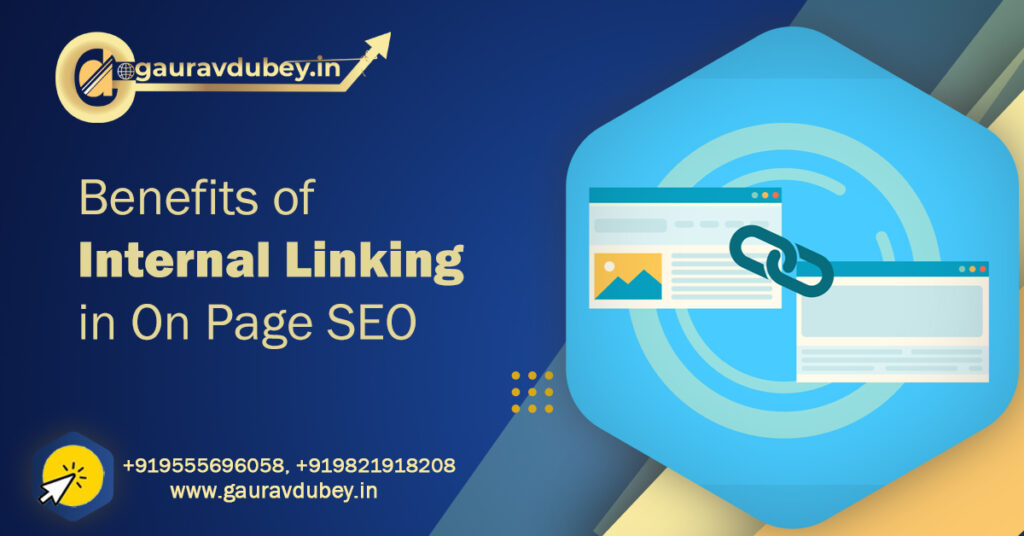If you optimize your content with On-Page SEO, you can’t provide a good user experience without internal linking. Internal linking is any link from one page of a domain to another page of the same domain. It helps the audience to discover what they need to know beyond the content. Content alone is not sufficient. Internal linking is important to support SEO by increasing traffic to other pages.
Every blogger knows well that to create high-quality content, internal linking is important to attract visitors as well as search engines. It establishes a web of connections between different content related to the same topic Also, internal linking is helpful in technical matters. If it is done correctly, it helps in eliminating redirect loops and broken links. It also builds site authority and helps in building site architecture and spreading the link juice.
Therefore, internal linking has several advantages. Here are some reasons why you should focus on internal linking.
Advantages of Internal Linking
-
Improves Usability
Internal links bring the readers more information. It pushes users to navigate throughout your website. If you use correct and user-friendly links in your content, users can easily navigate. Make sure your anchor text locate in related and relevant content that has the potential; to attract your readers to navigate. Readers become more engaged and spend more time on your website.
-
Boosts Page Views
If internal linking is done correctly which means the content you link is relevant to your audience, then the audience will more likely to read further content. It improves the page views. Also, it helps new users to discover your website. However, to be more efficient, you need to optimize your website speed to prevent a huge bounce rate.
-
Establish Architecture of the Website
The basic structure of your website is its taxonomy which refers to how the content is arranged within the menu. But the architecture of a website is more than this. Internal linking creates the web of pages and content.
The structural taxonomy is sorted by various topics and subtopics that are relevant from a homepage viewpoint. But what to do to connect one topic to another. It cannot be achieved within linear taxonomy. Your internal links turn disconnected pages into a comprehensive web by improving your UX design.
-
Enhance User Experience
Internal links allow users to know more about a certain topic. Users continue to strengthen their knowledge by clicking links that are more interesting to them. Visitors are entertained in a personalized way due to internal linking. Ultimately, it enhances the user experience of the website. Failing to do internal linking properly also harms the SEO of the page negatively.
-
Helps in Crawl and Indexing
Google bots are developed to create the thinking process of users. They visit your website and follow all the links that are properly indexed. Building a smart and strong architecture helps bots visit more pages on the website. Even those pages are visited that are not always visited. Therefore, these links improve the ranking of other pages. As a result, the overall ranking becomes higher.
-
Spread the Link Juice
External links build your site’s authority over other websites. Internal linking supports spreading your link juice to other pages of your website. When a backlink is created on a particular page of your site, it links to other pages of the same site. Thus, it spreads the link juice. As a result, this juice goes to your money pages. Because how the link juice flows to your internal links is the main component of SEO.
-
Increases Visitor’s Time on Site
Internal links to related topics can help in increasing visitors’ time on site and reduces the bounce rate. When a visitor views one page on the website and immediately leaves it, it denotes a higher bounce rate. A visitor retention strategy is required to reduce the bounce rate. So, you need to retain visitors to your site for longer. Internal links help in this. When the content on your site is internally linked with relevant and related topics, visitors are more likely to spend more time as they can dig deeper to know more about a particular topic.
-
Improves Conversion Rate
When an internal link is created by an e-commerce brand on its website, it improves user navigation. Users are more likely to visit other pages to know more about the product or service and if they do this, it increases their chance to make a purchase. Therefore, internal linking improves the conversion rate.

